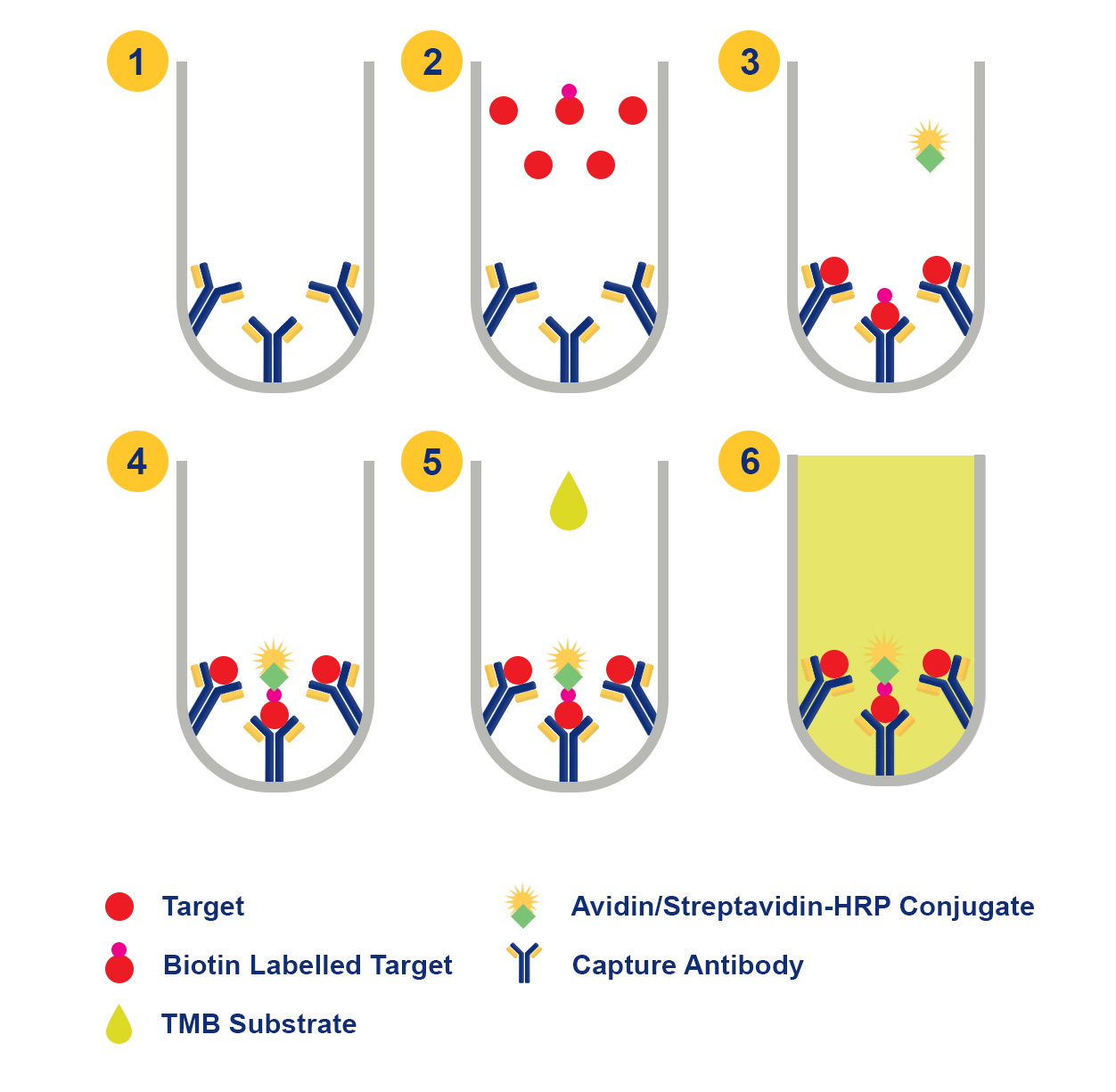D-Dimer
A Fibrin Degradation Fragment, more commonly referred to as D-Dimer, is one of the final fibrin degradation products produced when a clot is dissolved, marking the end of the clotting cascade. Elevated levels of D-Dimer can be indicative of pathological blood coagulation, as it is not normally detectable in the blood unless the body’s coagulation system is active.
Hemostasis
Human coagulation systems function via a process called hemostasis, in which the body attempts to regulate the creation and degradation of blood clots. Activation of the clotting cascade occurs primarily after an injury, where blood vessels have been damaged. Initially, the vessel wall contracts to minimise blood loss, closely followed by the recruitment of platelets to the site. Platelets adhere to other platelets and exposed collagen, allowing platelets to aggregate and form a physical barrier in the vessel. They are additionally responsible for the recruitment of numerous proteins essential for clotting.

Many of the coagulation factors necessary to form blood clots are already present in the bloodstream as zymogens, and platelets signal the release of factors that them. A key protein is thrombin, which is produced by the proteolytic cleavage of its precursor, prothrombin. Thrombin is a serine protease that functions to convert fibrinogen into fibrin, whilst also activating other important factors. Fibrin is a fibrous, non-globular protein which forms a mesh at the wound site; Factor XIII facilitates cross-linking.
After the clot has fulfilled its function, it must be dissolved in order to restore normal blood flow through the vessel. Plasmin in its zymogen form, plasminogen, is present in the circulation. When plasmin comes into contact with a fibrin clot, numerous activators convert it into the active plasmin form, which is a serine protease. It degrades fibrin via fibrinolysis. One of the smallest products of endogenous fibrin degradation is D-Dimer, a 180kDa dimer, formed from fragments of the three polypeptide chains found in fibrin (α, β and γ) and held together by disulphide bonds.
D Dimer Concentration and Disease
Due to the nature of its formation, an increase of D-Dimer in the blood is indicative of recent clotting, and therefore can be used to identify pathogenic clotting, which is characterised by an imbalance in hemostasis. Quantitative tests for D-Dimer hold their importance in their negative results. A negative D-Dimer test can be used to rule out conditions such as pulmonary embolism, deep vein thrombosis, stroke and disseminated intravascular coagulation. Although elevated D-Dimer levels can be indicative of these conditions, positive results are not conclusive and require further medical investigation - results do not indicate the location or cause of high D-Dimer levels. Additionally, it is also difficult to classify 'normal' levels of D-Dimer, hence applications typically rely on negative testing.
 |
D-Dimer analysis is prevalent throughout research into clotting and its related disorders, including thrombosis. Highly accurate and sensitive assay methods are constantly required to identify precise concentrations within samples.
Abbexa offers a wide range of unique and reliable products to support D-Dimer analysis in research. The D-Dimer ELISA kit provides efficient quantitative measurement of sample concentrations - its increased sensitivity allows small samples to be analysed. Three levels of QC ensure and maintain a high-quality productions process.
How does the Competitive ELISA work?
A competitive inhibition reaction occurs between the labelled and unlabelled D Dimer, with the D-Dimer-specific antibody pre-coated onto a 96-well plate. After further incubation and substrate addition, only wells containing D Dimer will yield a blue product which changes to yellow following the addition of a stop solution. O.D absorbance can be measured, which is inversely proportional to the amount of D Dimer bound to the plate. Spectrophotometric absorbance values can be used to calculate D Dimer concentration in the sample.

